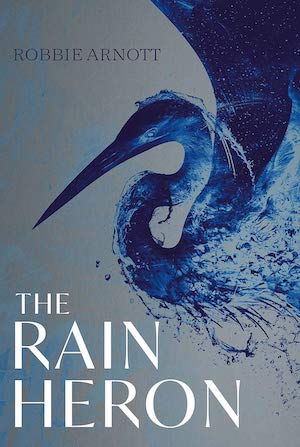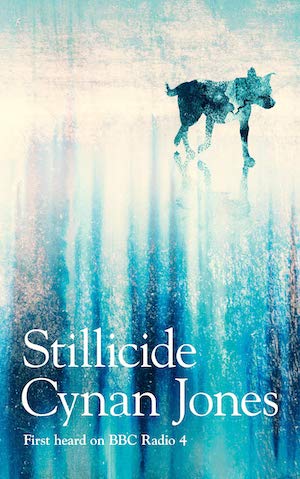 The past two months have been fairly hectic around here, mainly because I started a new job and I’ve had to learn a whole new role in a new industry and I’ve really not had the energy to read books much less review them.
The past two months have been fairly hectic around here, mainly because I started a new job and I’ve had to learn a whole new role in a new industry and I’ve really not had the energy to read books much less review them.
The books I have read haven’t exactly set my world on fire — perhaps because I’ve been distracted by other things — so I haven’t been inspired to write proper full-length reviews. Here’s a quick round-up of what I’ve read recently:
‘Springtime: A Ghost Story’ by Michelle de Kretser
 Fiction – paperback; Allen & Unwin; 96 pages; 2017.
Fiction – paperback; Allen & Unwin; 96 pages; 2017.
I’ve read a couple of Michelle de Kretser’s novels before — The Life to Come was one of my favourites last year — so I was delighted to find this novella in my local library. Billed as a ghost story, it’s not typical of the genre. Indeed, I’d argue it’s not a ghost story at all but a richly written tale about what it is like to begin a new life in a new city. The “ghosts” — for want of a better word — are the memories associated with the place you leave behind.
The story is about a married couple, Frances and Charlie, who are grappling with a move from Melbourne to Sydney. Everything feels unfamiliar and strange to them. Frances spends a lot of time exploring on foot with her dog — there are lots of lush descriptions of the city’s parks and gardens coming into bloom written with de Kretser’s typical literary flourishes — and it’s while she’s on her wanderings that she comes across a haunting sight in a neighbour’s garden. This “apparition”, which alarms her greatly, could also be seen as a metaphor for the ghosts in her husband’s past, which she is trying to decipher.
Easily read in a sitting, Springtime is about ghosts of the past haunting a marriage as much as it is about the eerie goings-on in the neighbourhood. I’d argue that it’s really only for die-hard fans of de Kretser; it felt slightly too ephemeral for me to get a real handle on the story. For a more detailed review, please see Lisa’s at ANZLitLovers.
‘The Bride Stripped Bare’ by Nikki Gemmell
 Fiction – paperback; Fourth Estate; 375 pages; 2011.
Fiction – paperback; Fourth Estate; 375 pages; 2011.
Originally published in 2003 under the author “anonymous”, The Bride Stripped Bare is an erotically charged tale about a married woman’s sexual awakening. Written in diary form as a series of lessons numbered from one to 138, it tells the story of a young woman who has never felt sexually fulfilled in her marriage and then acts, somewhat foolishly it has to be said, on her impulse to take a lover.
Her relationship with Gabriel, a handsome older man who turns out to be a virgin, gives her the chance to explore her own needs and desires without fear of judgment. Intoxicated by the power of her newly developed sexual prowess, she begins to take chances she shouldn’t and the double life she’s leading pushes her perilously close to the edge.
Admittedly, this book got me out of a reading slump, probably because it’s written in a compelling tone of voice (in the second person) and surges along at an octane-fuelled pace, helped no doubt by the exceedingly short chapters, but I didn’t love it enough to want to read the two follow-ups, With My Body and I Take You. And the whole idea that you could find a willing 40+-year-old virgin hanging around London seemed too ludicrous for me to take the story all that seriously…
‘Shepherd’ by Catherine Jinks
 Fiction – paperback; Text Publishing; 240 pages; 2019.
Fiction – paperback; Text Publishing; 240 pages; 2019.
Shepherd tells the tale of a teenage poacher from Suffolk who is transported to New South Wales as a convict in 1840. The narrative swings backwards and forward in time, detailing Tom’s old life in England, and then contrasting it with his new life assigned to a shepherd’s hut, where he helps to protect a flock of sheep with a trio of violent prisoners.
This fast-paced story is essentially a chase novel, for it follows what happens when Tom becomes caught up in events that may lead to his death at the hands of a vicious killer known as Dan Carver.
Initially, I really liked this tale, especially Tom’s warm, empathetic voice, his wisdom, his concern for the “blacks” and his desire to know the plants and animals of the Australian landscape, but it soon began to wear thin when I realised there was not enough show and too much tell. There was too much violence in it for me, too, and the chase dragged on for too long to sustain my interest. Without wishing to damn it with faint praise, it actually felt like a novel that teenage boys might like, so it comes as no surprise that the author has several award-winning children’s books to her name.
‘The Trespassers’ by Meg Mundell
 Fiction – paperback; University of Queensland Press; 278 pages; 2019.
Fiction – paperback; University of Queensland Press; 278 pages; 2019.
If ever a novel was to be a nod to the shenanigans of Brexit or Australia’s shameful immigration detention policy, this is it. The Trespassers is a dystopian tale set on a crowded ship bound for Australia. Onboard are Brits escaping the disease-ridden UK. They have all been carefully screened, but midway through the voyage disease breaks out, someone is found dead and an unplanned quarantine situation arises.
The story is told through the eyes of three different characters, all superbly drawn, who take turns to narrate their side of events in alternate chapters: there’s a nine-year-old Irish boy who is deaf, a singer-turned-nurse from Glasgow and an English schoolteacher in need of money.
By the time the ship gets to its destination, several people have died and there’s no guarantee the immigrants will be allowed to disembark on Australian soil. This is a riveting story that reads like a thriller but has all the intelligence and wisdom of a literary novel not afraid to tackle big issues such as healthcare, immigration, human trafficking and politics. I really loved this book and hope to see it pop up on literary prize lists in the very near future.
‘Bruny’ by Heather Rose
 Fiction – paperback; Allen & Unwin; 424 pages; 2019. Review copy courtesy of the publisher.
Fiction – paperback; Allen & Unwin; 424 pages; 2019. Review copy courtesy of the publisher.
Tasmanian writer Heather Rose will be known to most people for her award-winning The Museum of Modern Love, a book I loved so much I convinced my book group to read it even though it hadn’t yet been published in the UK (we all bought it on Kindle). Bruny, her latest novel, has arrived with much fanfare, but it’s completely different in almost every possible way to what preceded it.
Set in Tasmania some time in the very near future, it tells the story of the bombing of a massive bridge being built to link mainland Tasmania with the island of Bruny, just across the D’Entrecasteaux Channel. The terrorist attack brings the bridge down, but it also brings worldwide attention to this usually quiet and sleepy part of the world. New York-based UN conflict resolution expert Astrid Coleman returns home to help her twin brother, the state premier, soothe troubled waters. Matters are complicated further by a dysfunctional family: her sister is the Opposition Leader; her mother barely talks to her; and her father, who is slowly dying of Alzheimer’s, can only communicate in Shakespeare quotes.
A sharp-eyed and intelligent political satire come thriller (reminiscent of Charlotte Grimshaw’s Soon), the book is fast-paced and written with wit and verve. But as much as I enjoyed reading it, I just didn’t buy the premise — that a massive bridge would be built in this part of the world and that terrorists would take the time to blow it up — and had a hard time taking it seriously. And even though I went to the Perth launch and heard Rose talk about the story in great depth (she was very careful not to give away crucial plot spoilers), I’ve come to the conclusion that the book is simply preposterous — but I’m sure that won’t stop it being shortlisted for awards aplenty.
These books are all by Australian women writers. They represent the 19th, 20th, 21st, 22nd and 23rd books I have read this year for #AWW2019.
 And because the author resides in Perth (she moved here in 2004 and has recently completed her PhD at Curtin University), the book also qualifies for my #FocusOnWesternAustralianWriters. You can find out more about this reading project here and see what books I’ve reviewed from this part of the world on my Focus on Western Australian Writers page.
And because the author resides in Perth (she moved here in 2004 and has recently completed her PhD at Curtin University), the book also qualifies for my #FocusOnWesternAustralianWriters. You can find out more about this reading project here and see what books I’ve reviewed from this part of the world on my Focus on Western Australian Writers page. 














